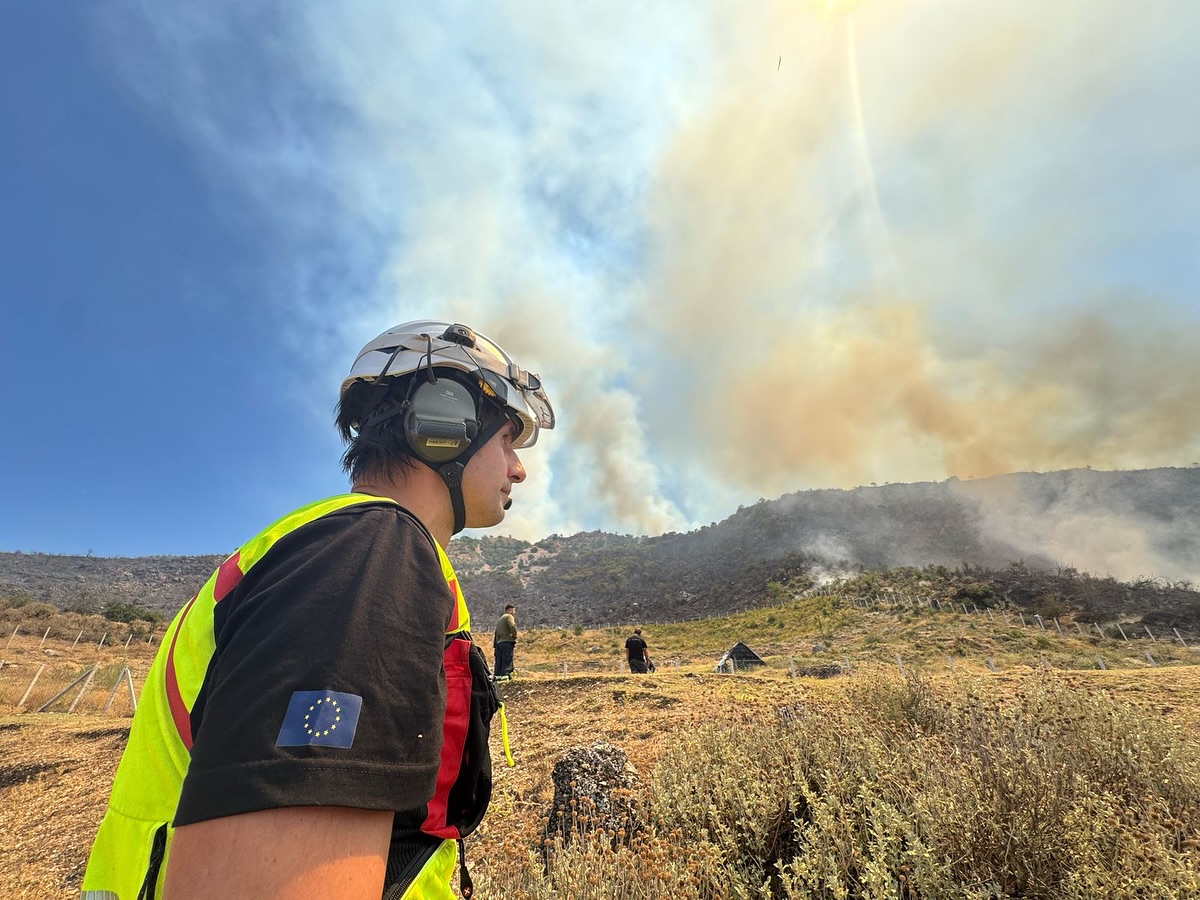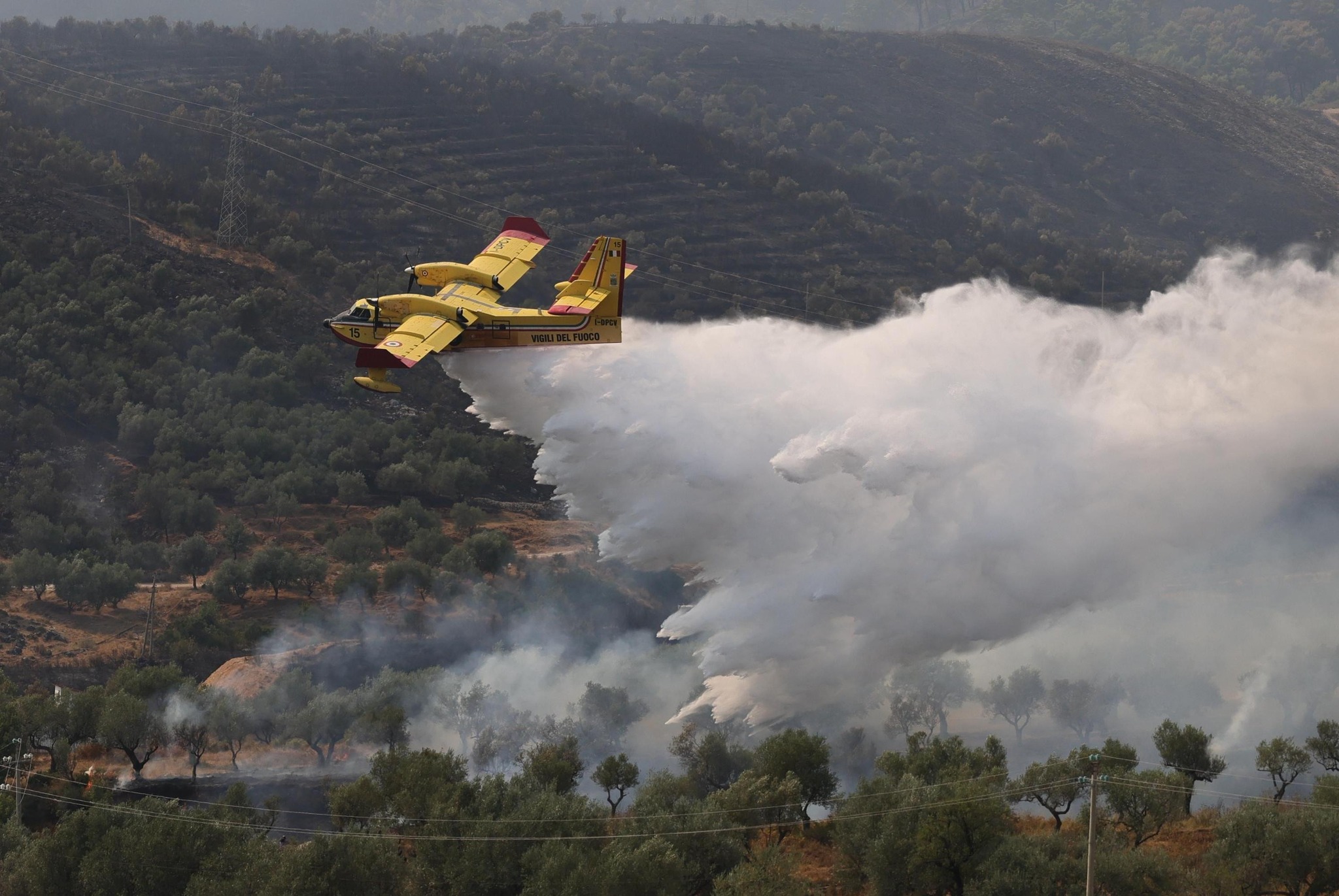
The Civil Protection Mechanism is a resource of the European Union which, under the motto “solidarity knows no borders”, is always available to EU Member States as well as candidate countries. In 2024 alone, it was activated six times in the Western Balkans to respond to wildfires, and in 2025 eight times.
“The EU Civil Protection Mechanism intervenes after a request for assistance has been submitted by a national government or, in some cases, by an international organisation such as the United Nations. In the case of the Western Balkans, the requests have always come from national authorities, usually the services responsible for civil protection. The EU’s Emergency Response Coordination Centre connects directly with the relevant civil protection body on the ground and acts accordingly”, explained a European Commission spokesperson.

In Montenegro, in early August 2025, a wildfire raged for eight days, spreading across much of the territory and approaching the capital.
“Due to the complex situation in Bar and Budva, the EU Civil Protection Mechanism was triggered through the CECIS system, and Croatia immediately offered to send a water-bombing aircraft. We also activated a request for assistance through NATO’s EADRCC mechanisms”, announced the Montenegrin Government at the outset of the fight against the blaze. In the following days the Croatian plane was recalled to combat fires at home, but support arrived in Montenegro from Italy, Austria and Switzerland.
“Assistance from the EU, as well as from Serbia, Bosnia and Herzegovina and Croatia, arrived as soon as it was requested. We lost a couple of days because the fire broke out in the hills above the coast, around Buljarica and Čanj, and we did not react – the authorities did not call for help. Once they did, planes from Italy and Croatia fought fires above Podgorica, Bar and Budva, while aircraft from Serbia, the Czech Republic, Hungary and Croatia tackled blazes elsewhere in Montenegro. The large number of firefighters from Austria and Switzerland was crucial in relieving our exhausted fire brigades and local volunteers, and their expertise in tackling forest fires demonstrated just how important field training and proper equipment are. We learnt a great deal from them and owe them enormous gratitude – to our neighbours and to the EU Member States – because without their help, the scale of this disaster would have been far greater”, said environmental activist Aleksandar Dragičević. He added that more than 12,000 hectares of land had been burnt, along with several dozen homes and outbuildings, numerous vineyards and orchards, low oak woodland, native vegetation and many habitats. He stressed that some aircraft remained even after the main sources of fire had been extinguished, while rainfall after eight or nine days of devastation provided additional relief.
“This is an arid region affected by climate change, which had been experiencing a prolonged period of drought. Combined with high temperatures, this triggered the wildfires. Over 65 per cent of Montenegro’s territory is covered by forests and vegetation – wilderness, Mediterranean terrain. Between 2013 and 2017, more land was destroyed by fire than between 1950 and 1980. We are ill-equipped: our firefighters lack adequate training, we do not have enough water tenders, masks, or sufficient voluntary fire brigades, which should exist in every municipality. Firefighters from Austria and Switzerland have special equipment to prevent fires from spreading – rakes and trimmers to cut back undergrowth – equipment we simply do not possess”, Dragičević explained.

At the start of August alone, Albania, Spain and North Macedonia were also affected by wildfires across the EU. More than 80 fires were active, hundreds of hectares of land were destroyed, dozens of kilometres of roads were damaged, and in places the fire front stretched several kilometres. The European Commission has decided to allocate €10.7 billion to the Mechanism for the period 2028–2034 to increase preparedness for responding to health and other emergencies.
To be as effective as possible in saving lives during natural disasters, the European Union has also activated the Copernicus satellite service, which provides rapid, open data to support mission planning.
Copernicus is part of the EU’s Earth Observation space programme, which, through a network of satellites and partner missions, gathers data on climate, land, water, pollution, natural disasters, migration and more. A key function is its ability to map with great precision floods, fires, earthquakes, landslides and similar events, and to transmit this information. This service works directly with the Galileo satellite system, which is linked to the COSPAS-SARSAT ground station network, transmitting data to national rescue centres. Copernicus provides maps of affected areas (fires, floods, helicopter access routes), giving rescue teams in the field the most accurate possible guidance. According to EU figures, this system helps save around 2,000 lives annually, showing that EU investment in space technology directly supports public safety and crisis response.
Every two years, the Galileo programme brings together rescue crews from across Europe and beyond to test their skills, exchange experience and help shape the future of this life-saving service.
“Assistance from the EU, as well as from Serbia, Bosnia and Herzegovina and Croatia, arrived as soon as it was requested. We lost a couple of days because the fire broke out in the hills above the coast, around Buljarica and Čanj, and we did not react – the authorities did not call for help. Once they did, planes from Italy and Croatia fought fires above Podgorica, Bar and Budva, while aircraft from Serbia, the Czech Republic, Hungary and Croatia tackled blazes elsewhere in Montenegro. The large number of firefighters from Austria and Switzerland was crucial in relieving our exhausted fire brigades and local volunteers, and their expertise in tackling forest fires demonstrated just how important field training and proper equipment are. We learnt a great deal from them and owe them enormous gratitude – to our neighbours and to the EU Member States – because without their help, the scale of this disaster would have been far greater”, said environmental activist Aleksandar Dragičević. He added that more than 12,000 hectares of land had been burnt, along with several dozen homes and outbuildings, numerous vineyards and orchards, low oak woodland, native vegetation and many habitats. He stressed that some aircraft remained even after the main sources of fire had been extinguished, while rainfall after eight or nine days of devastation provided additional relief.
“This is an arid region affected by climate change, which had been experiencing a prolonged period of drought. Combined with high temperatures, this triggered the wildfires. Over 65 per cent of Montenegro’s territory is covered by forests and vegetation – wilderness, Mediterranean terrain. Between 2013 and 2017, more land was destroyed by fire than between 1950 and 1980. We are ill-equipped: our firefighters lack adequate training, we do not have enough water tenders, masks, or sufficient voluntary fire brigades, which should exist in every municipality. Firefighters from Austria and Switzerland have special equipment to prevent fires from spreading – rakes and trimmers to cut back undergrowth – equipment we simply do not possess”, Dragičević explained.

At the start of August alone, Albania, Spain and North Macedonia were also affected by wildfires across the EU. More than 80 fires were active, hundreds of hectares of land were destroyed, dozens of kilometres of roads were damaged, and in places the fire front stretched several kilometres. The European Commission has decided to allocate €10.7 billion to the Mechanism for the period 2028–2034 to increase preparedness for responding to health and other emergencies.
To be as effective as possible in saving lives during natural disasters, the European Union has also activated the Copernicus satellite service, which provides rapid, open data to support mission planning.
Copernicus is part of the EU’s Earth Observation space programme, which, through a network of satellites and partner missions, gathers data on climate, land, water, pollution, natural disasters, migration and more. A key function is its ability to map with great precision floods, fires, earthquakes, landslides and similar events, and to transmit this information. This service works directly with the Galileo satellite system, which is linked to the COSPAS-SARSAT ground station network, transmitting data to national rescue centres. Copernicus provides maps of affected areas (fires, floods, helicopter access routes), giving rescue teams in the field the most accurate possible guidance. According to EU figures, this system helps save around 2,000 lives annually, showing that EU investment in space technology directly supports public safety and crisis response.
Every two years, the Galileo programme brings together rescue crews from across Europe and beyond to test their skills, exchange experience and help shape the future of this life-saving service.
Please wait while your video is being uploaded...
Don't close this window!